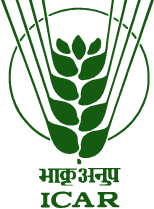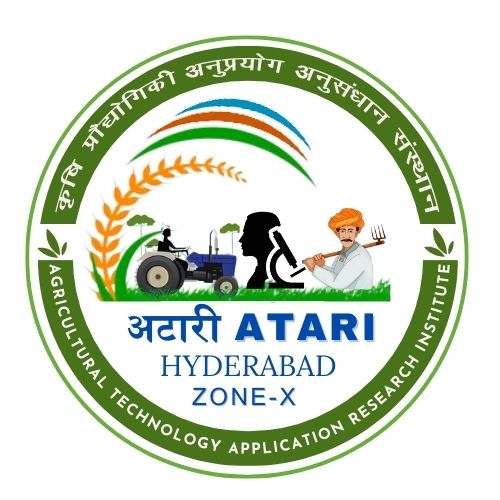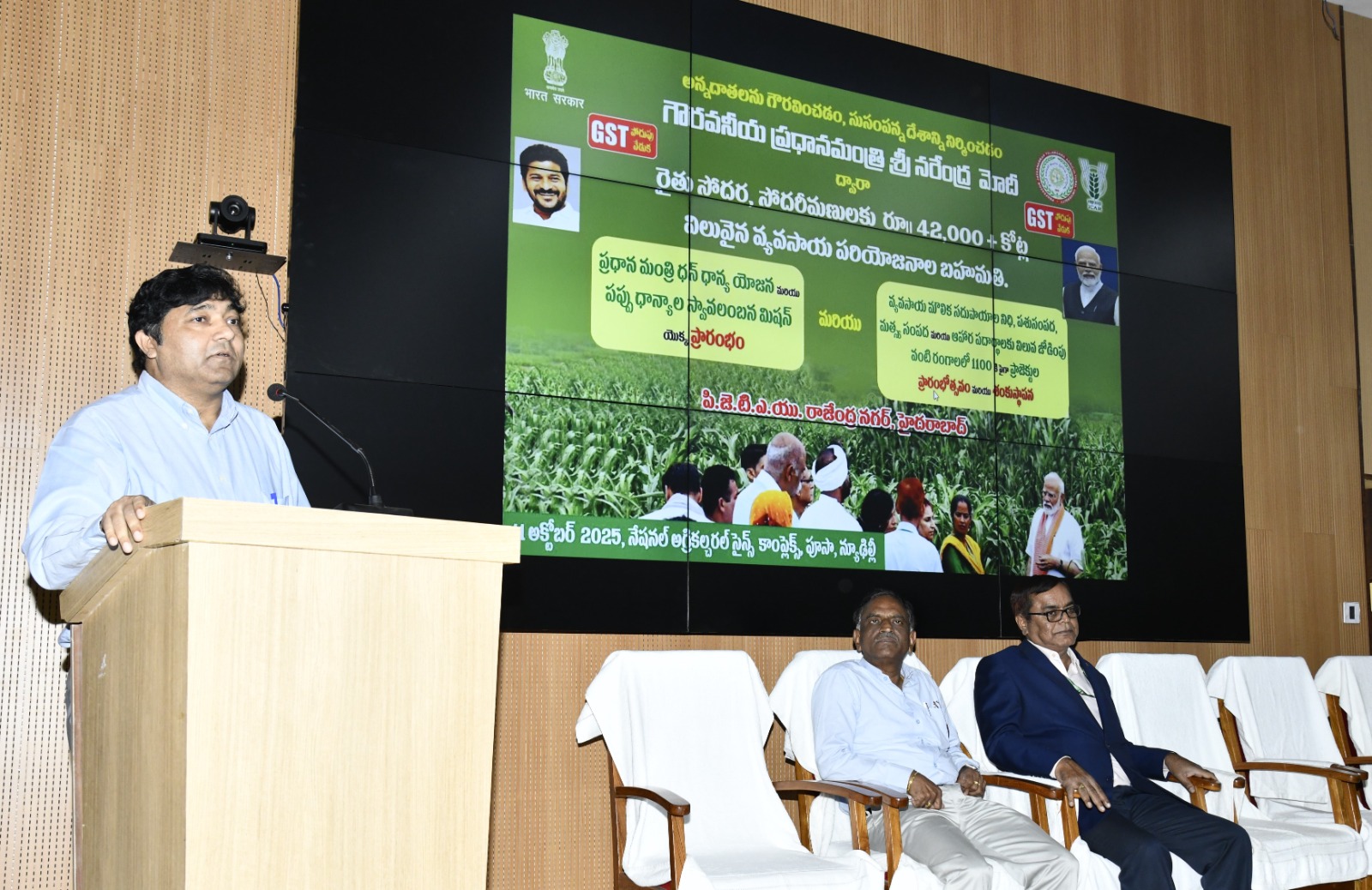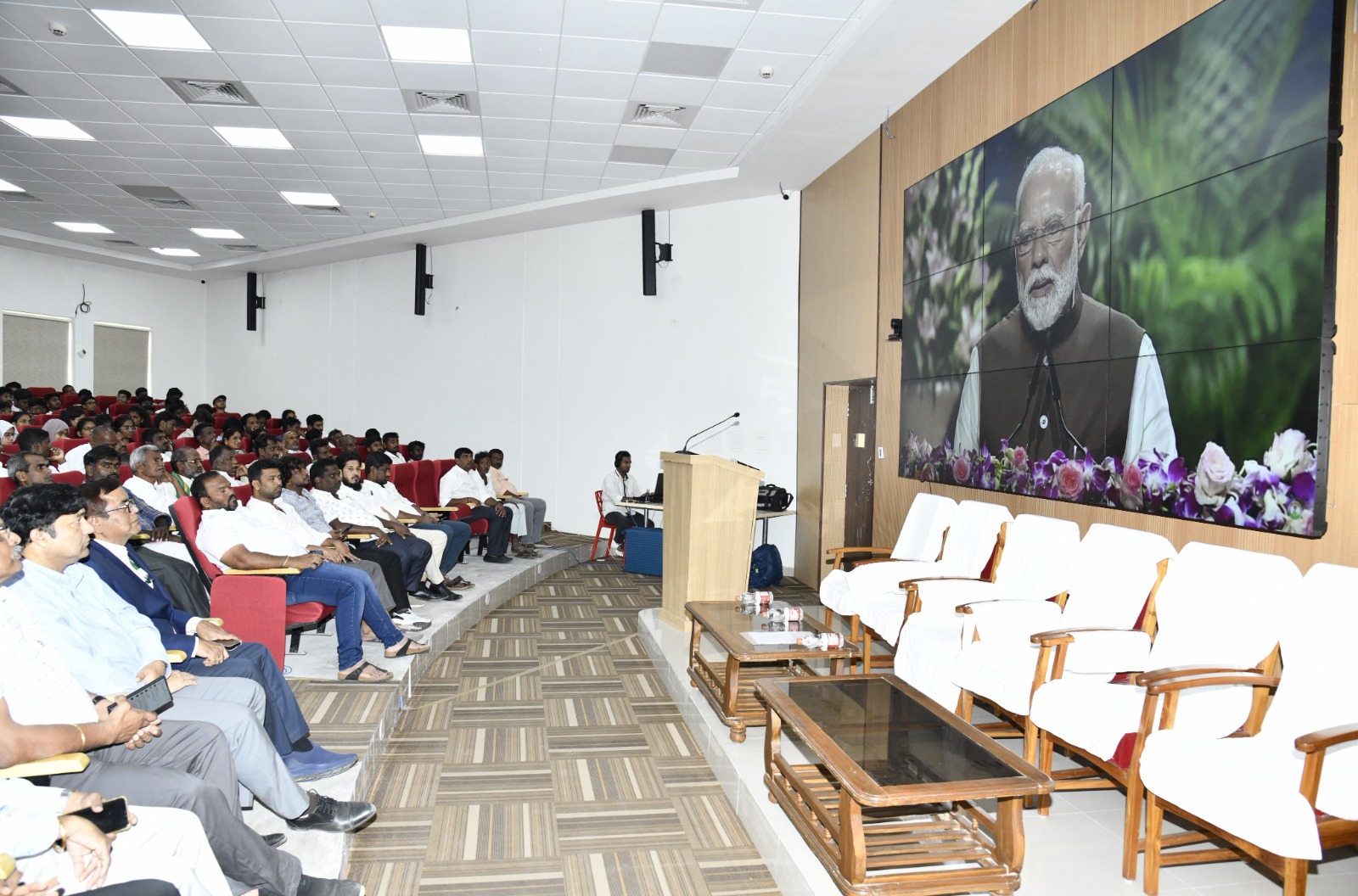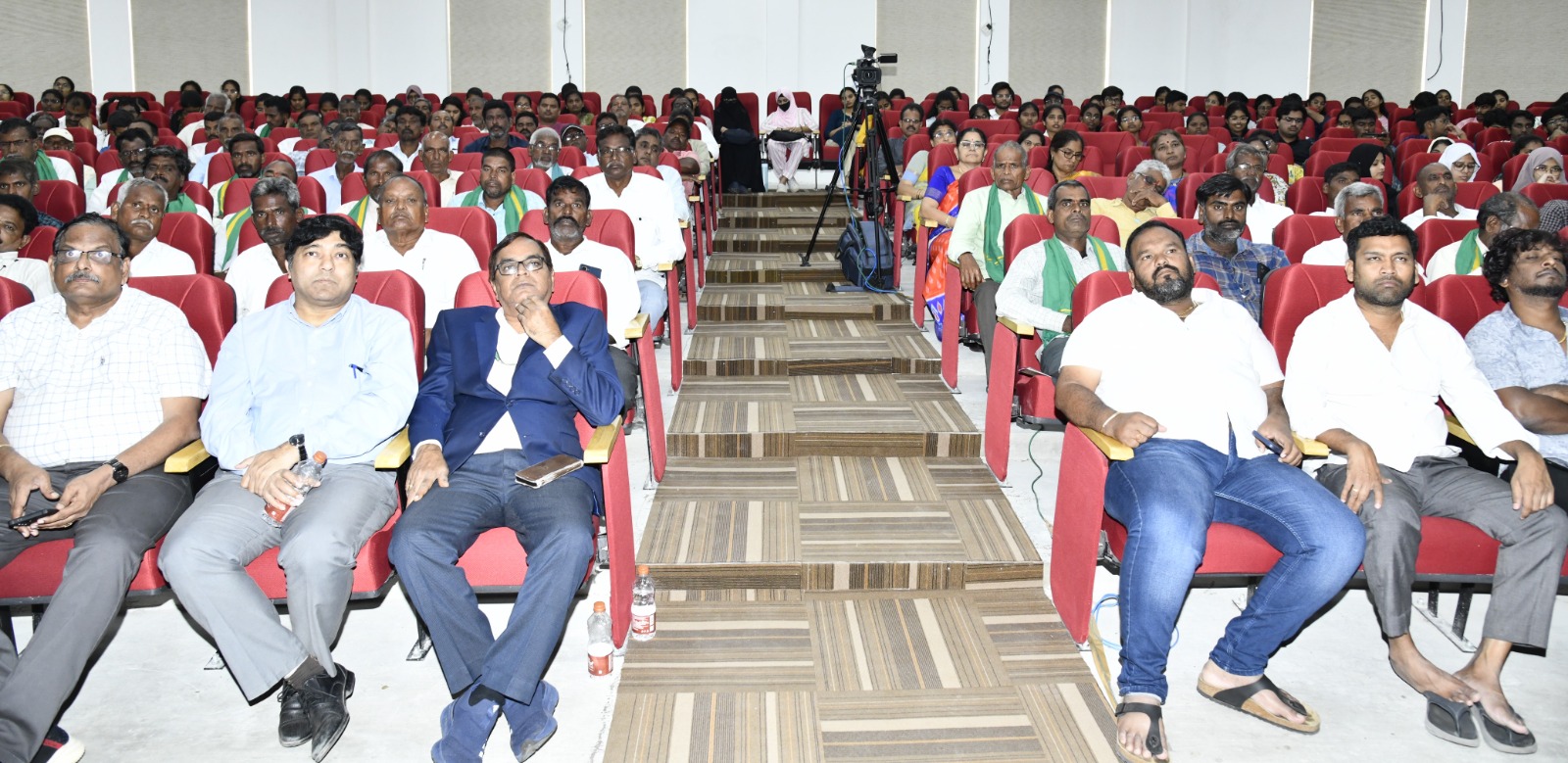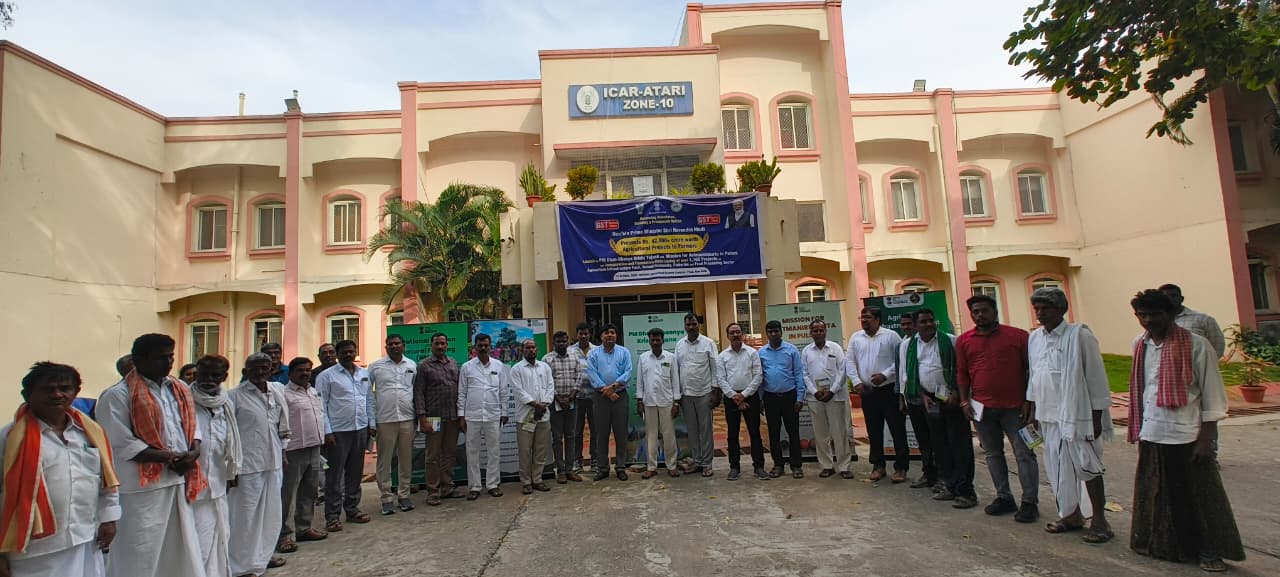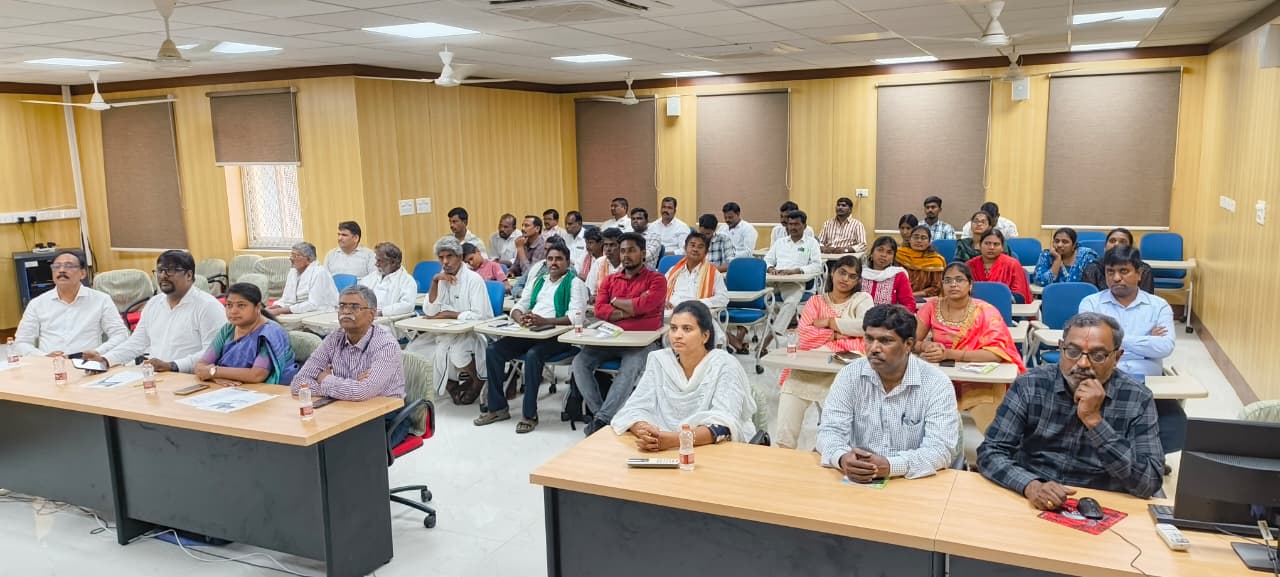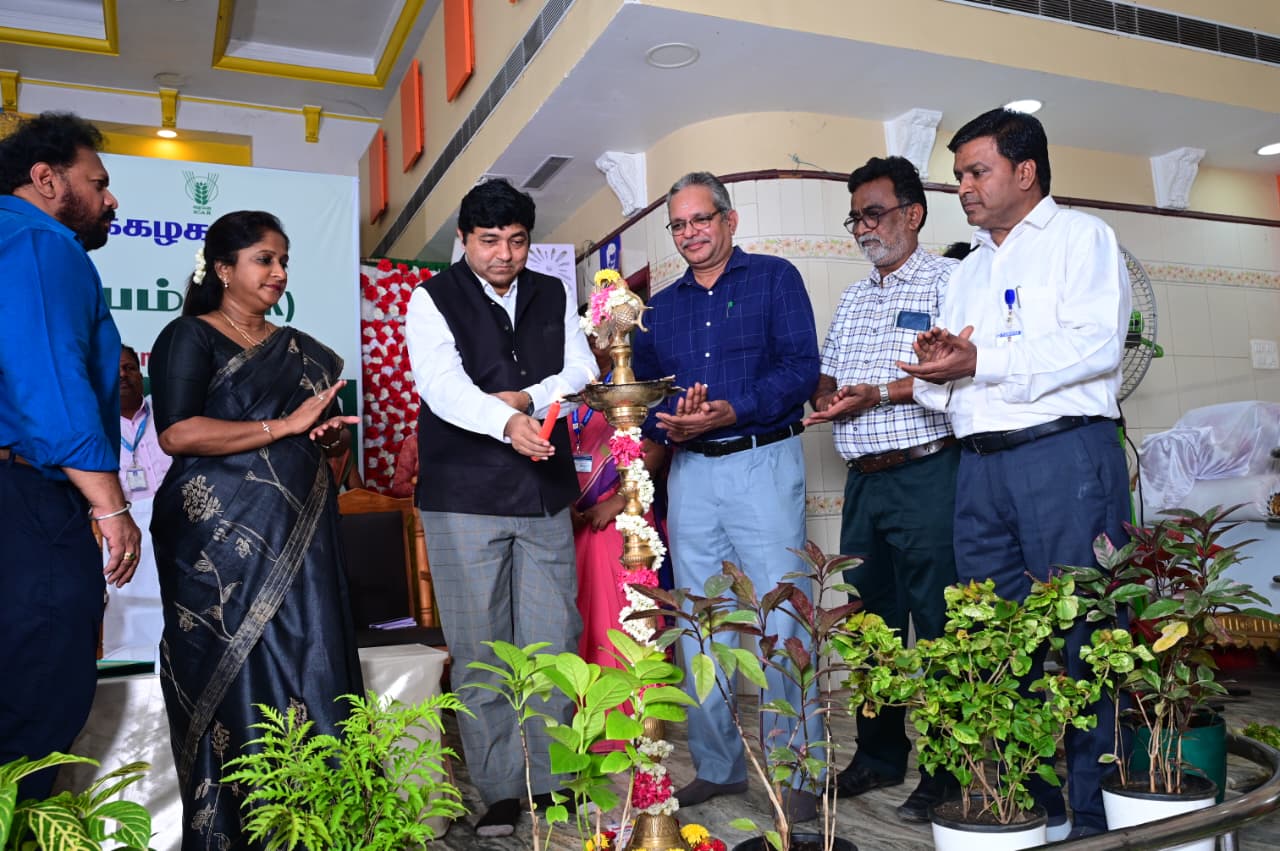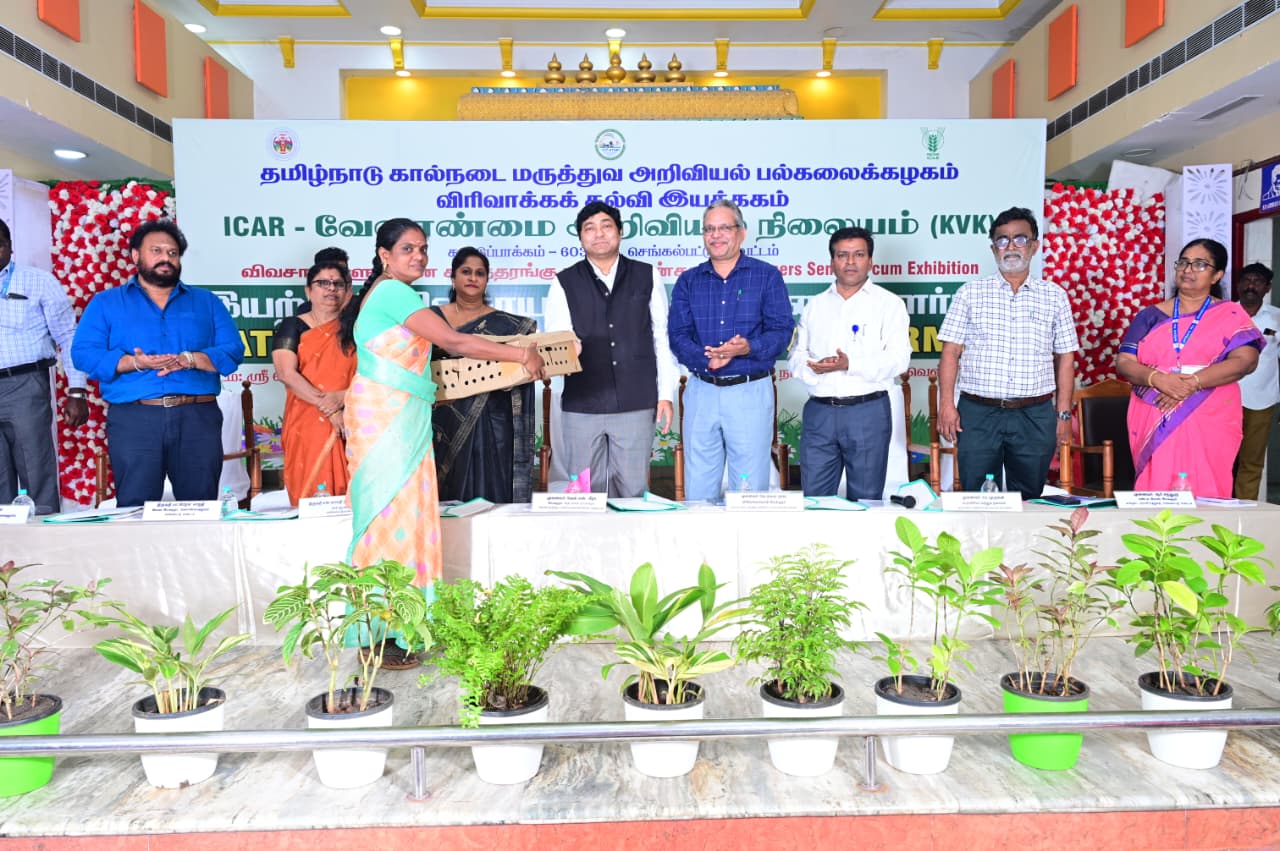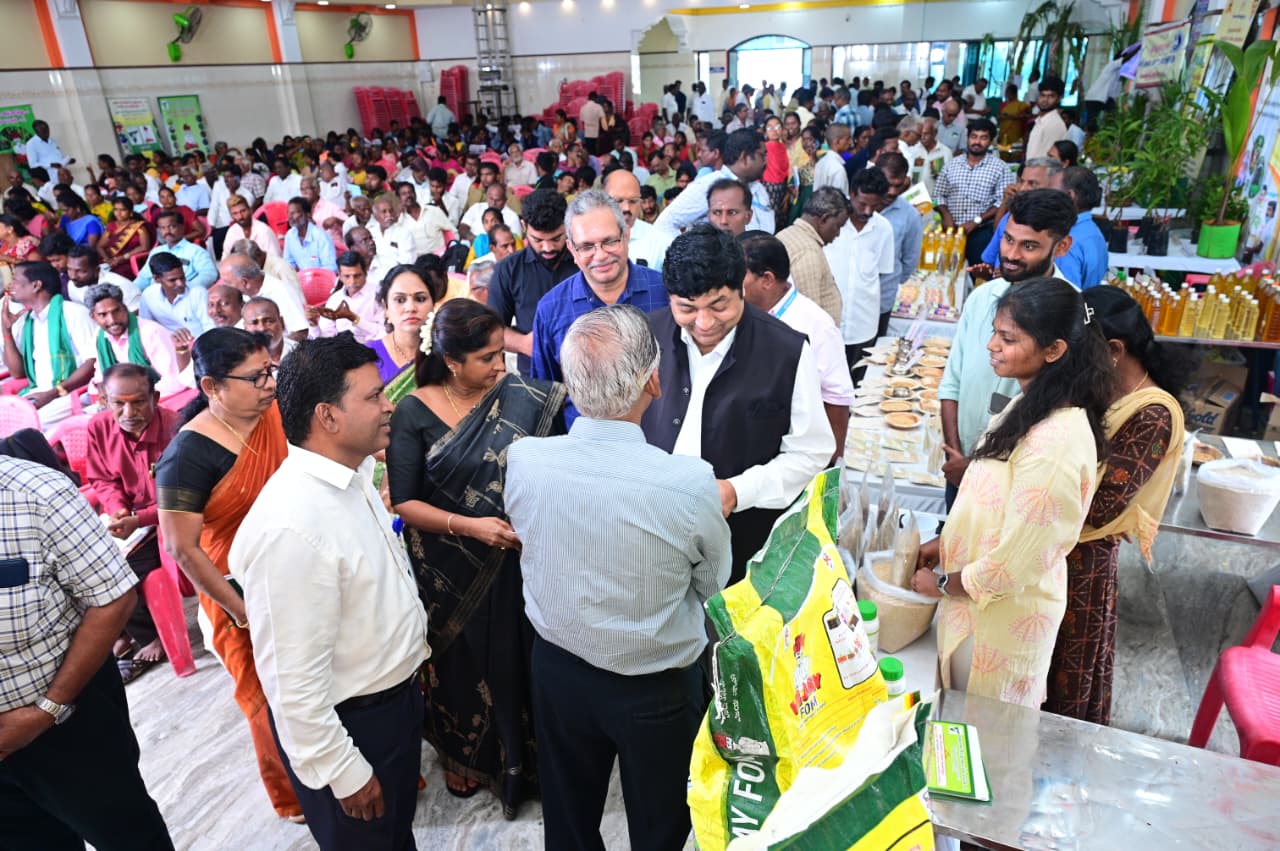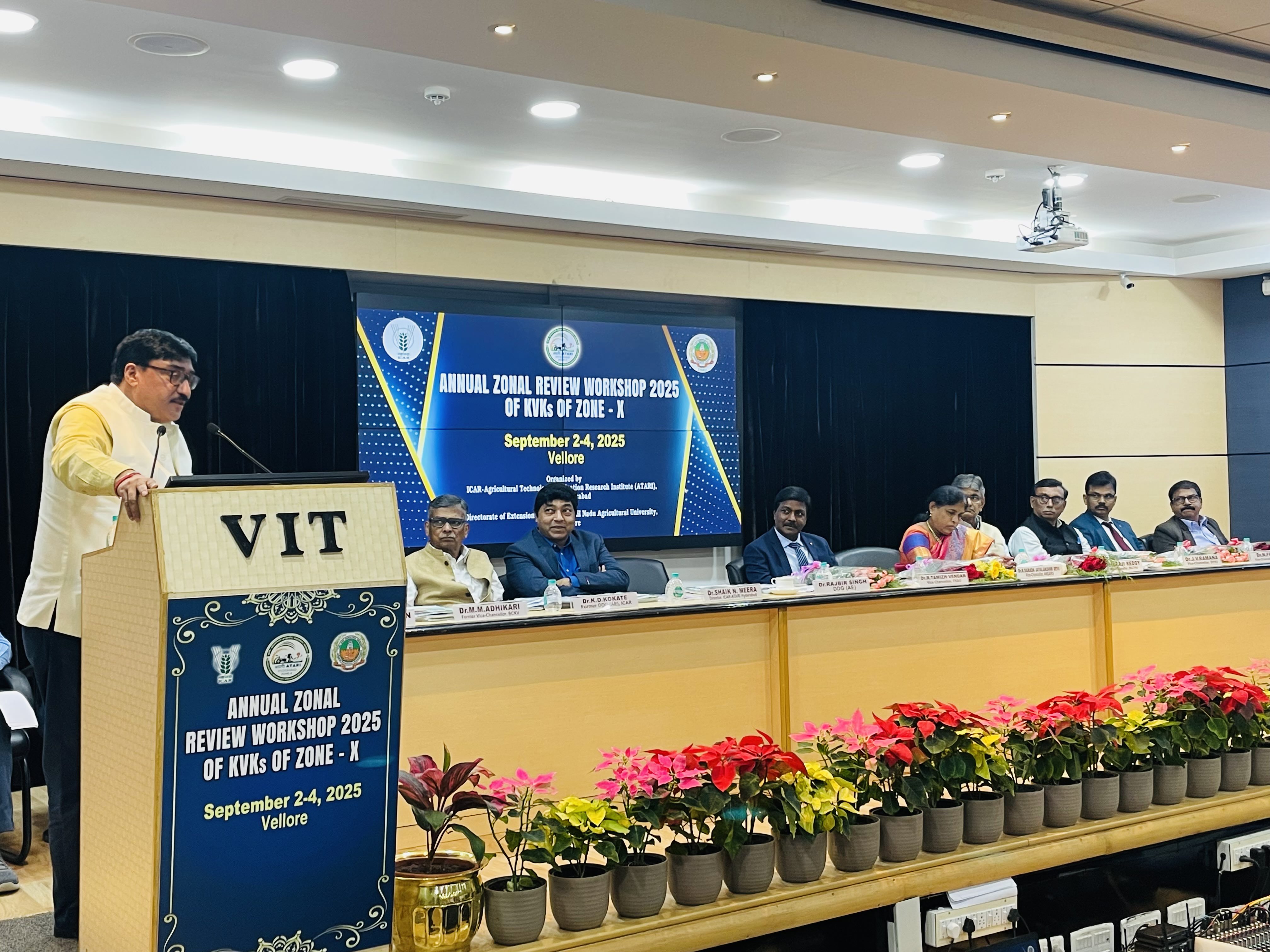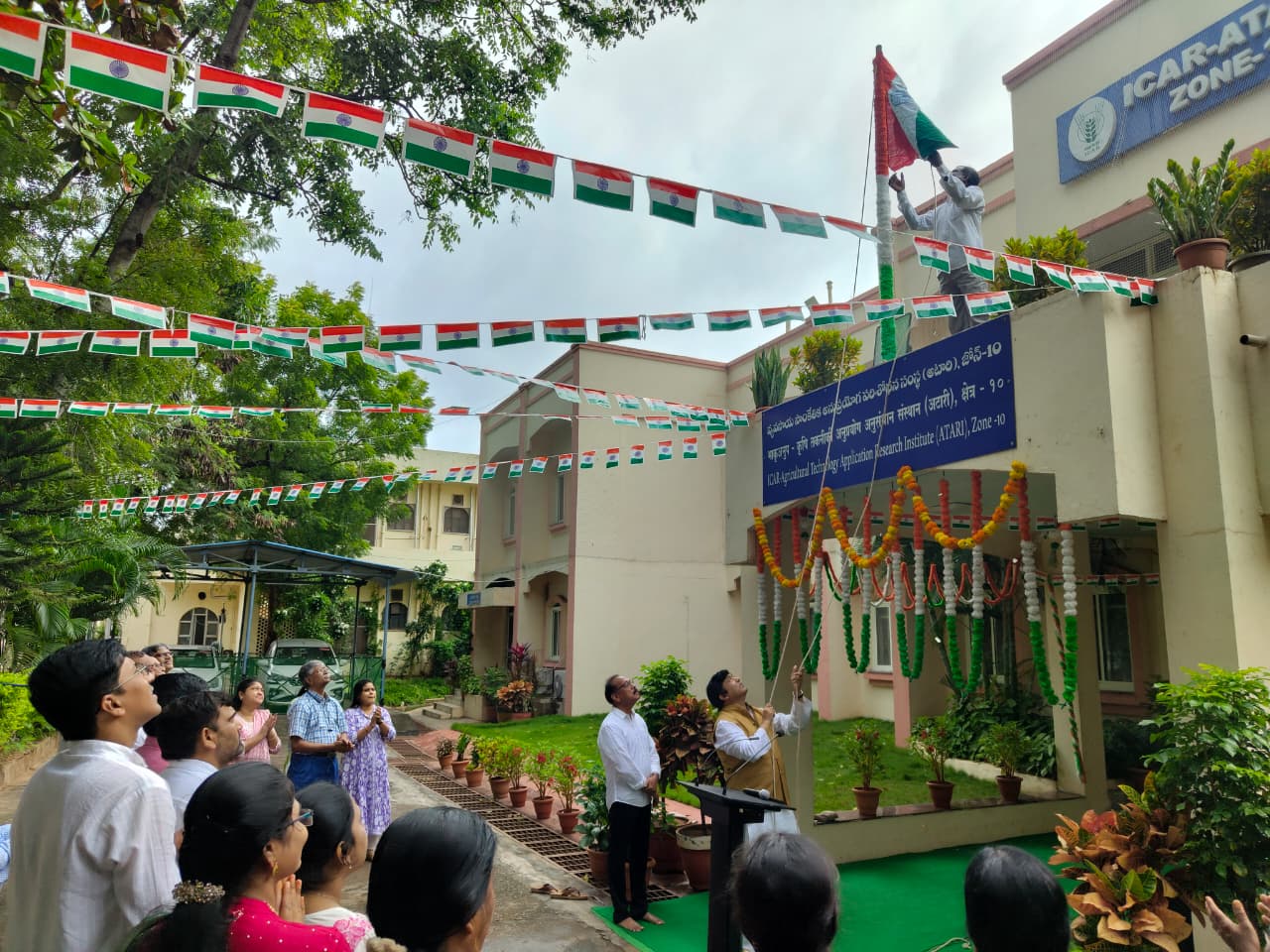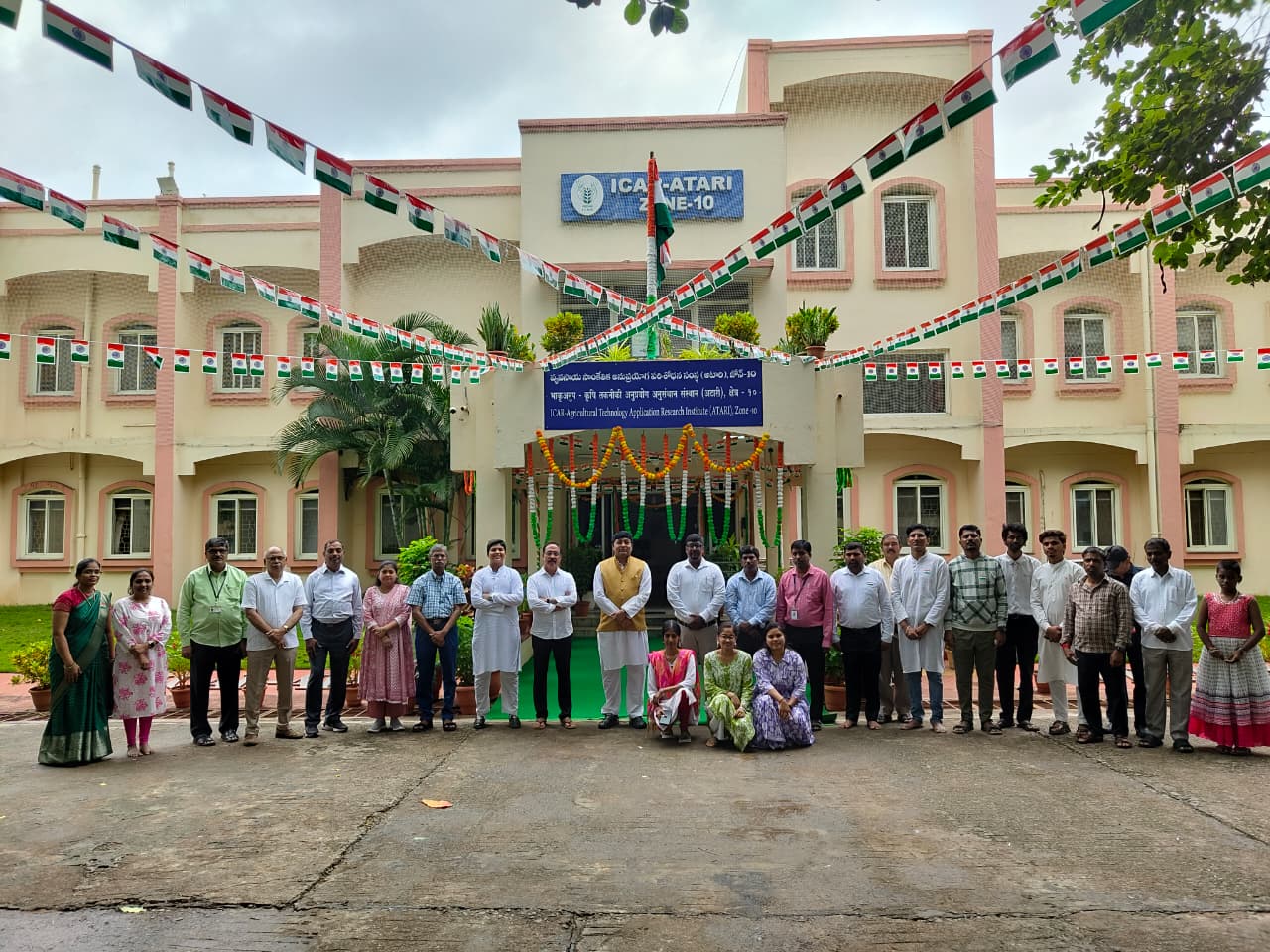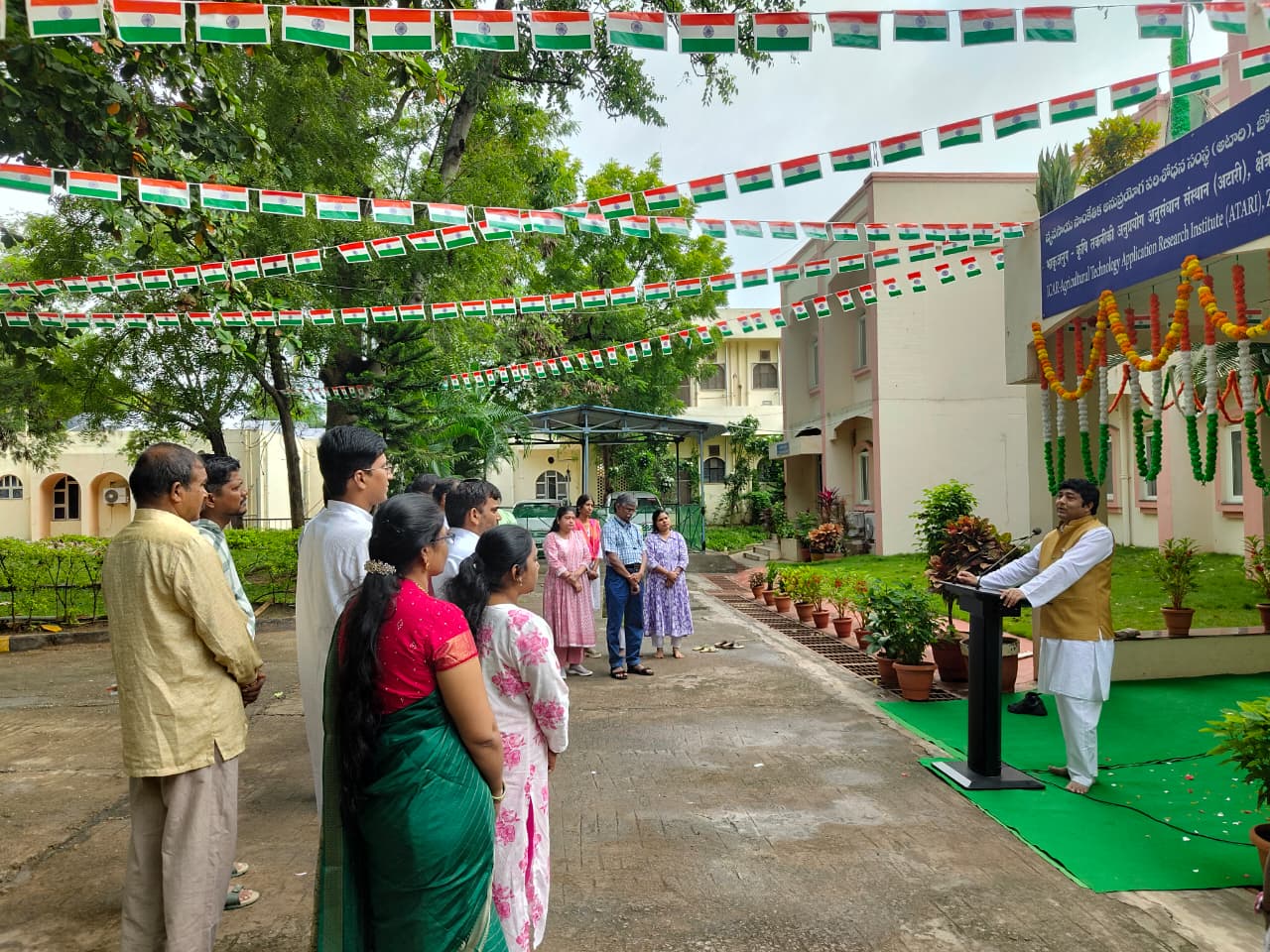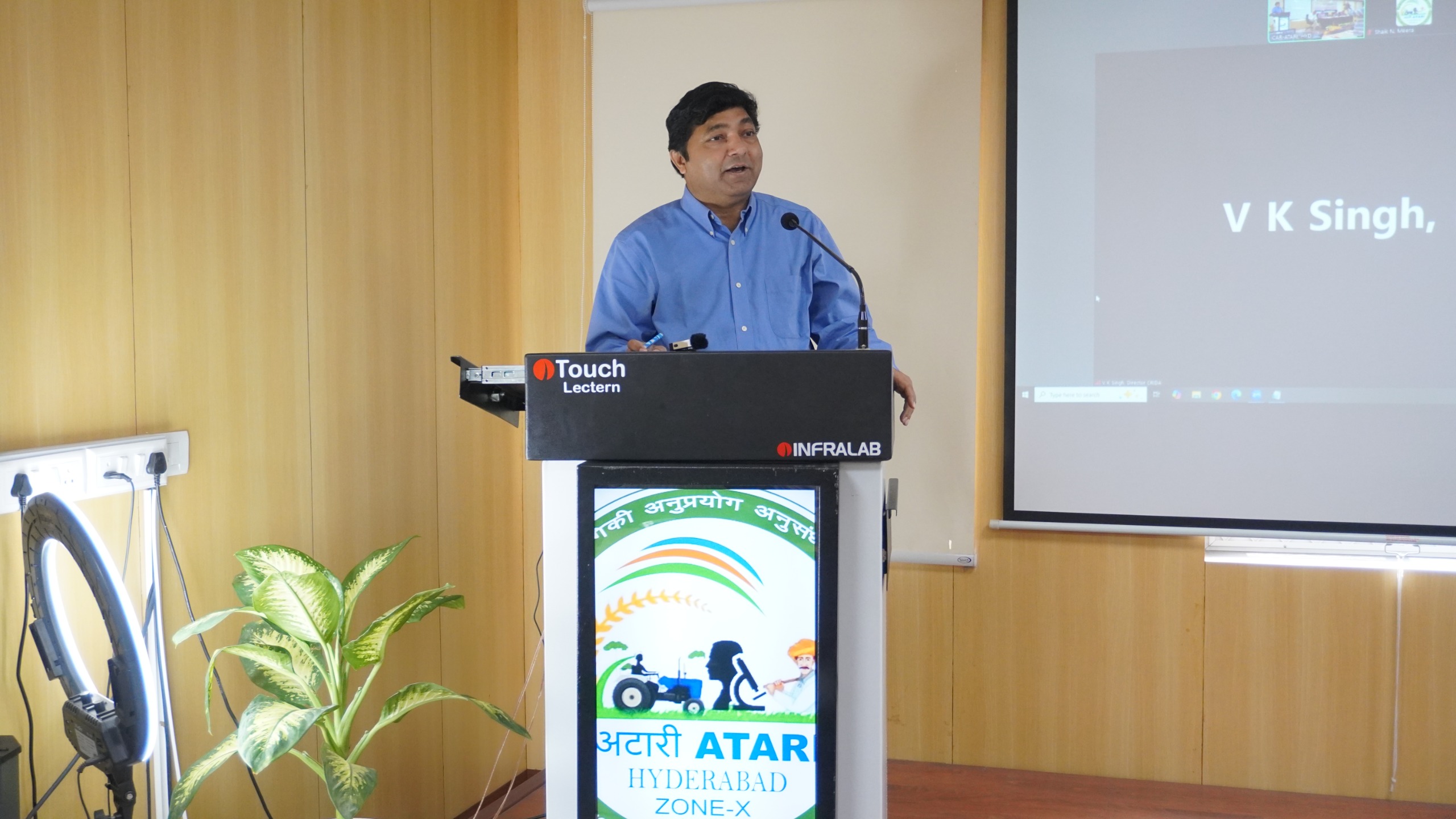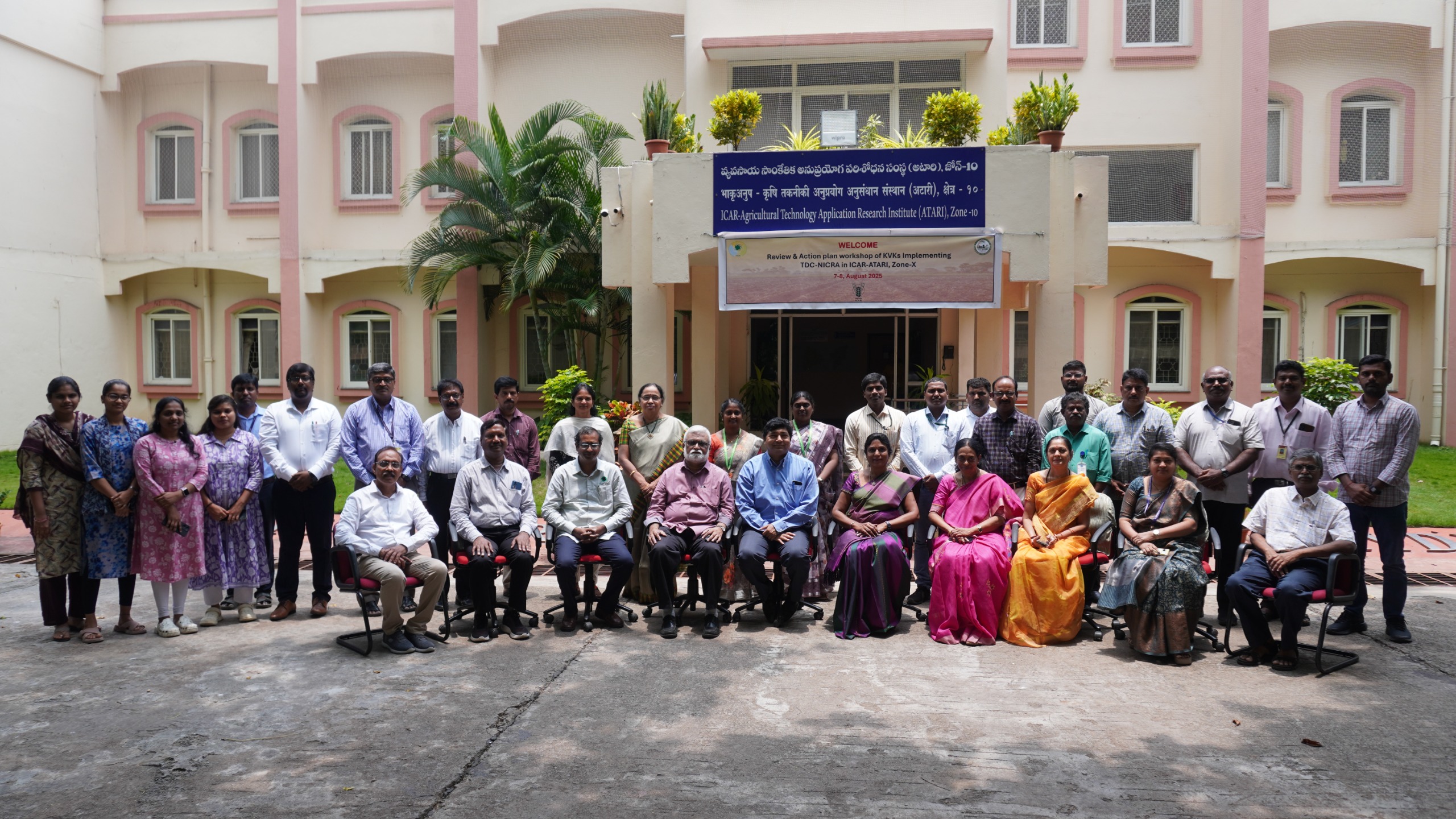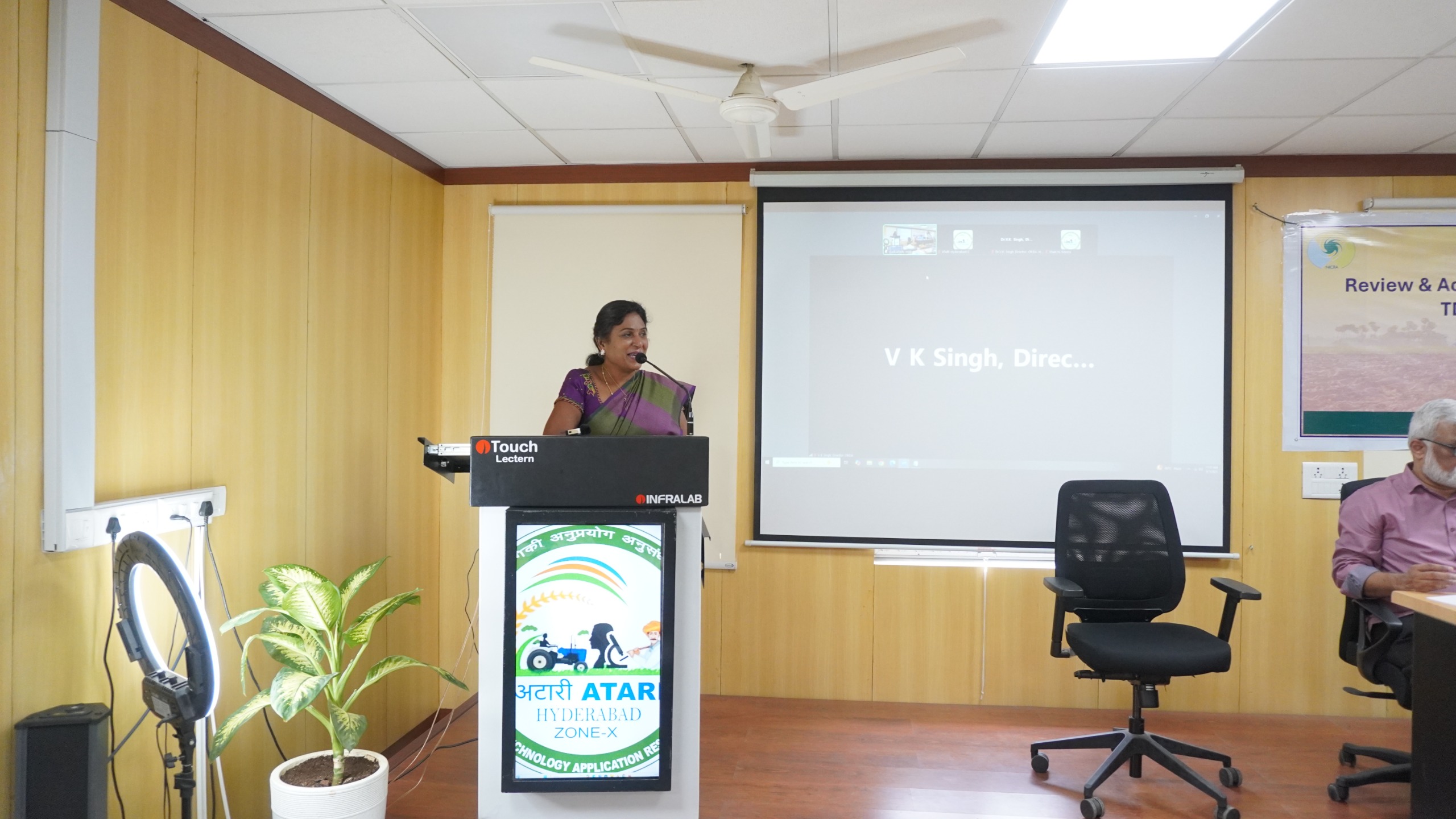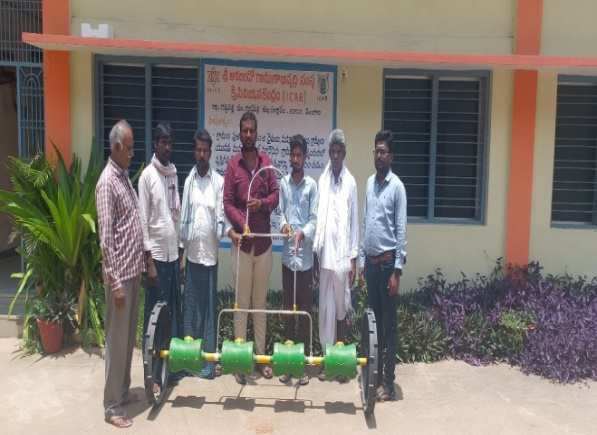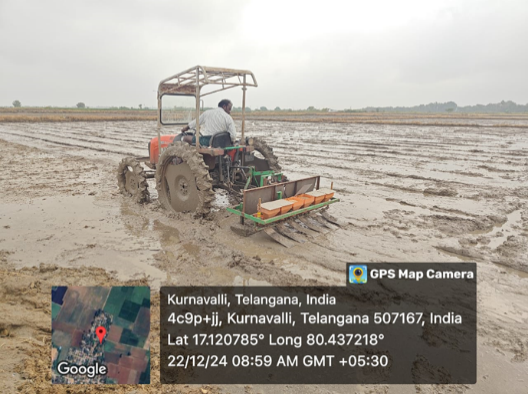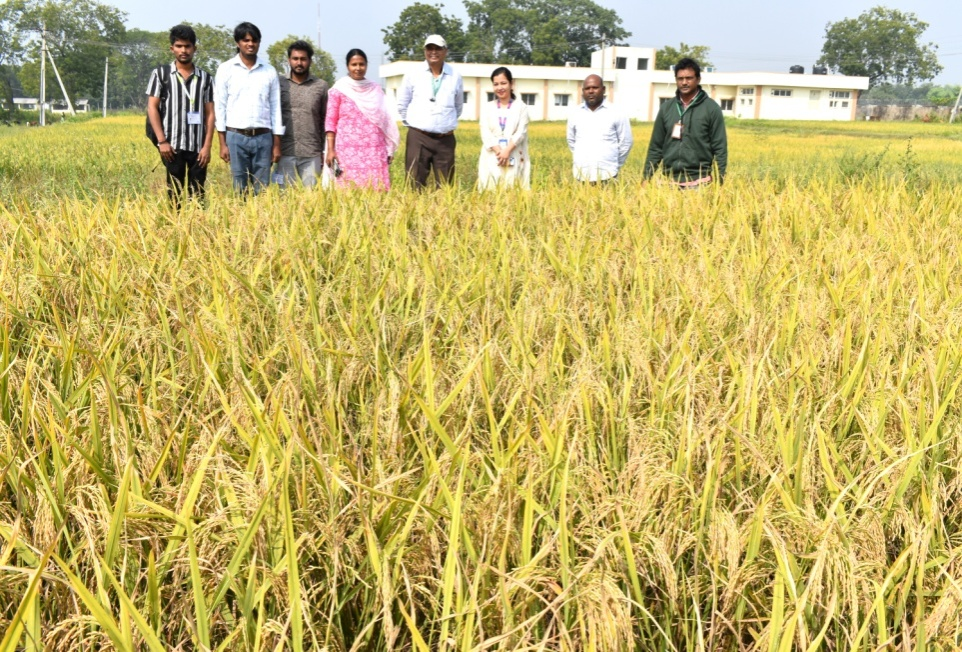Project Description
Introduction:
The Direct Seeding of Rice (DSR) project was implemented during the Rabi (Yasangi) season of 2024-25 across 4 KVKs of Telangana - Nalgonda (Gaddipally and Kampasagar) and Khammam (Wyra and Kothagudem) in Collaboration with Indian Institute of Rice Research (IIRR), Hyderabad, with support from the State Bank of India Foundation, local farm organizations and ICAR ATARI, Hyderabad.The primary objective of the project was to promote sustainable agricultural practices and enhance the efficiency of rice cultivation in the region.
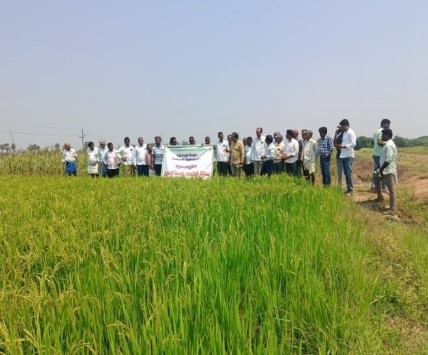
Aim
The overall aim of the Project is to increase the productivity of rice with limited resources (water and labour saving and enhancing resource efficiency) and environmental sustainability by large-scale adoption of mechanised DSR through public, and private partnerships.
Objectives:
- To catalyse the large-scale adoption of the Wet and Dry DSR systems (Mechanised) in selected districts of Telangana and promote suitable rice-based systems (Praanadhara).
- To develop critical knowledge research-based products (IOT), automated irrigation systems and Early detection of biotic and abiotic stresses through farmers' participatory adaptive research (AGRI BRIDGE, CultYvate and Intech Harness Pvt Ltd).
- To promote the mechanisation with cluster approach and viable demonstrations (PRAANADHARA-NGO and ATARI-Hyderabad and KVKs of Nalgonda and Khammam).
- To develop Capacity building and assess the socio-economic impact of DSR on yield, resources use and net income of the farmers through KVKs and other partners (doubling the Farmer's income).
Methodology:
The Project will be implemented in two districts in Telangana State covering different rice- based cropping systems for 2 years. Through its scaling partners, it is expected the project will catalyse the adoption of the mechanised DSR in about 500 acres in the state with IOT-based data collection and much-improved forewarning of pests and diseases. This will be further beneficial to the farming community to get additional profit for adopting better management practices and mitigating climate change.
Comparison of Direct seeded rice with transplanted rice
Direct Seeding of Rice (DSR) technology gave higher yields when to compare to traditional Transplanted Paddy practices. Farmers practicing DSR achieved an average yield of 25-26 quintal per acre with an average cost of 26,000 to 27,500/- per acre. In contrast, farmers using the transplanted method recorded an average yield of 23-24 quintal per acre with an average cost of 32,000 to 35,500/- per acre. The average yield of rice is 25.53 q/acre under DSR while 23.69 q/acre under transplanted rice. As a result, gross returns, net returns and the benefit-cost ratio were significantly higher in DSR method compared to traditional transplanting.
Impact of Direct Seeded Rice (DSR) technology in Telangana
Economic Benefits:
Farmers adopting Direct Seeded Rice (DSR) report additional income of Rs.6000-9000 per acre due to reduced cultivation costs compared to traditional Normal Transplanted Paddy (NTP) methods.
Water Conservation:
DSR helps reduce water consumption, which is crucial for Telangana's agriculture, especially considering the state's efforts to conserve water resources.
Environmental Benefits:
By avoiding continuous flooding, DSR lowers methane emissions-a major advantage over NTP systems-contributing to reduced greenhouse gas emissions and a healthier ecosystem.
Cost Savings:
As there is no nursery and transplanting in DSR compared to NTP there will be more cost saving in DSR. Further, the seed rate is also low in DSR compared to NTP which further reduces cost.
Labour costs:
DSR requires less manual labor 12-35%, compared to transplanting due to lack of nursery and transplanting operation.
Weather Condition:
In traditional transplanted paddy (NTP), continuous flooding creates an anaerobic condition which produces more methane emission, a harmful greenhouse gas. In contrast, Direct Seeded Rice (DSR) uses alternate wetting and drying, leading to significantly less methane emissions which in turn reduce the greenhouse effect and weather.
